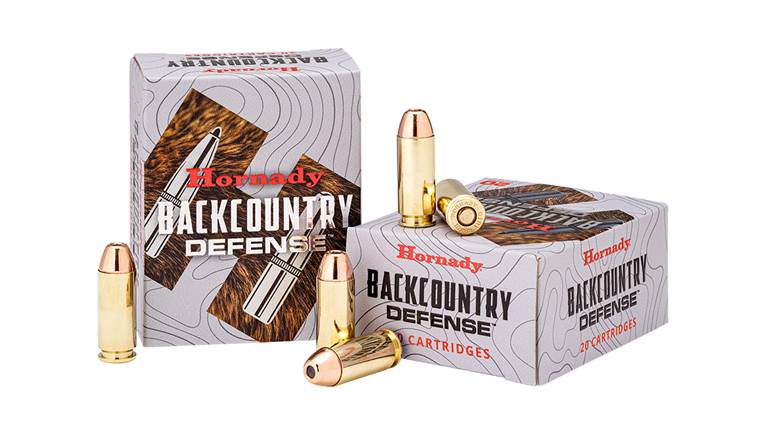
Taking a circuitous route to these shores, the B&T TP9 9 mm pistol from DS Arms, Inc., traces it lineage back to the Austrian Steyr Taktische Maschinenpistole (TMP) and related semi-automatic Special Purpose Pistol (SSP)—albeit with a detour through Switzerland along the way.
In 2001, the Swiss company Brügger & Thomet negotiated the purchase of the TMP/SPP from Steyr, including all patents, drawings and production rights. B&T updated the design by reshaping the frame, improving the trigger pull, adding Picatinny rail sections and modifying the safety/selector configuration. The result was the MP9 sub-machine gun. As a parallel development, B&T also developed a semi-automatic pistol version of the design called the TP9. This variant is being imported to the United States for civilian sale by DS Arms, Inc., as the B&T TP9.
The 100 percent Swiss-made TP9 weighs in at 44 ounces and features high-impact resin polymer upper and lower receivers. The TP9 employs a closed-bolt design with a novel delayed blowback system of operation.
Unlike more common rotating-bolt systems, the TP9 uses a rotating barrel system. When fired, recoil causes both the steel bolt and steel barrel to move rearward for a short distance. During this movement, a locking pin located in the upper section of the bushing-like barrel guide at the muzzle end of the pistol engages a control cam cut into the barrel. This cam causes the eight-lug barrel to rotate clockwise, unlocking it from the bolt assembly and allowing the bolt to continue rearward to cycle the action.
The magazine well is in the pistol grip, and it accepts the TP9’s double-stack translucent polymer magazines. The test model came with one 15- and one 30-round magazine, although 10-rounders are also available. Once a loaded magazine is fully seated into the magazine well, an AR-style charging handle just to the rear and below the rear sight is retracted fully then released to allow the bolt to move forward under spring pressure and feed a round into the chamber.
The TP9 features three safeties: an internal firing pin safety, a manual cross bolt safety and a Glock-style safety located on the face of the trigger. The rectangular cross-bolt safety, which passes from right to left to disengage, features a white dot to indicate safe and a red dot to indicate ready to fire.
An interesting feature of the TP9 is a circular recess cut into the side of the bolt body that is exposed through the open ejection port. This recess is designed to accept the case head of a 9 mm Luger cartridge to provide leverage to open the action during a malfunction.
Another side benefit of the delayed-blowback operation of the TP9 versus a more conventional straight-blowback system is the fact that it allows the use of a last-shot bolt hold-open mechanism activated by a ledge on the left side of the magazine follower. Once a fresh magazine has been inserted, a bolt release button located on the left side of the lower receiver can be pressed down to send the bolt home. This lever can also be used to manually lock open the action.
Brügger & Thomet modified the design somewhat to improve ergonomics and modularity. The grip frame on the test model was quite comfortably shaped, and the 44-ounce pistol balanced surprisingly well in the hand despite its size. The addition of Picatinny rail sections on the top of the upper receiver as well as forward of the trigger guard on the lower receiver were appreciated, making it quite easy to mount accessories such as a SureFire X200 WeaponLight and a Zeiss Z-Point red-dot optic. In addition to the Picatinny rail on the upper receiver, the TP9 has iron sights that include an elevation-adjustable cylindrical post front and a winged, windage-adjustable notch rear.
For testing, we tried the pistol out with a combination of FMJ ammunition as well as some defensive hollow-point loadings. The pistol was extremely pleasant to shoot, due in no small part to its weight and size combined with its mild 9 mm Luger chambering. Over the course of several hundred rounds, there was a single failure-to-extract malfunction. Apart from that, the testing procedure was uneventful.
Although the TP9 exhibited good mechanical accuracy, the trigger pull was heavy and exhibited some unpleasant stacking before breaking. However, accuracy was still quite good, with it showing a preference for the lighter bullet weights.
The TP9 is definitely intriguing, with its uniquely Austrian lines and latter-day Swiss heritage. For those in the market for an extremely capable tactical-style pistol for which price is no object, the TP9 might be the ideal solution.






































